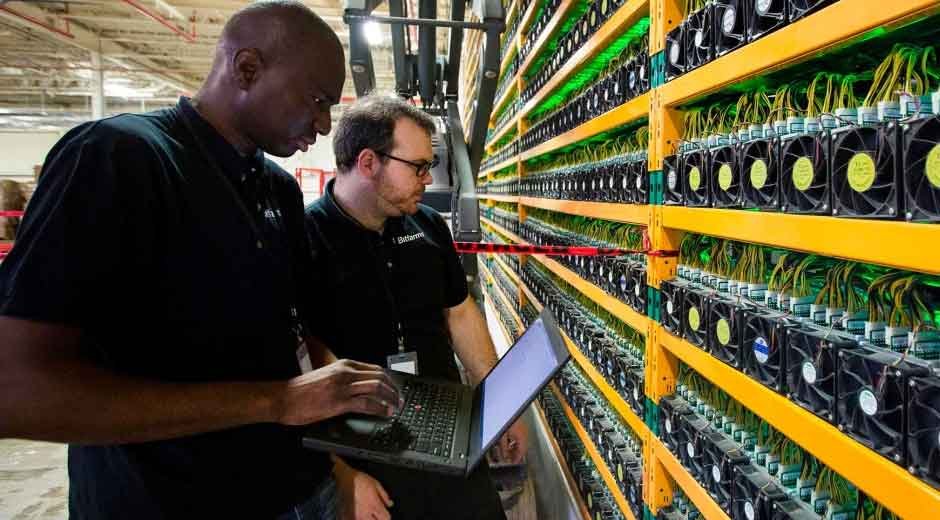Cryptocurrency mining looked simple enough five years ago. Buy hardware, plug it in, and watch the money roll in. That dream died hard when miners started facing monthly repair bills exceeding their mining profits. Hardware failures, thermal shutdowns, and efficiency drops turned profitable operations into money pits faster than most people could troubleshoot the problems.
The reality hits differently when your expensive ASIC miner starts throwing error codes at 3 AM, or when summer heat waves push your equipment past safe operating temperatures. Weekend warriors who thought they could handle everything themselves often discover that mining requires the same technical precision as running a small data center.
When Simple Becomes Complicated
Mining hardware pushes electrical components harder than almost any other consumer application. These machines run calculations 24/7 while generating heat that would make a space heater jealous. The constant stress creates maintenance challenges that catch most operators off guard.
Temperature swings affect performance immediately. A 10-degree increase in ambient temperature can drop hash rates by 15% or more. Dust accumulation blocks airflow, creating hot spots that kill components months ahead of schedule. Power fluctuations from the electrical grid can damage sensitive circuits without warning.
Firmware updates arrive monthly, each requiring careful testing before deployment. Mining pool configurations change based on network difficulty and market conditions. BIOS settings need adjustment as hardware ages and efficiency drops. These tasks sound straightforward until you realize that one wrong setting can brick expensive equipment.
Core Maintenance Challenges That Trip Up DIY Miners
Mining hardware wears out in predictable patterns, but recognizing early warning signs requires experience that most operators lack. ASIC chips degrade gradually, reducing efficiency before complete failure. Capacitors dry out from constant heat exposure. Fan bearings wear down from continuous operation.
Professional technicians spot these problems months before failures occur. They use thermal cameras to identify hot spots invisible to standard monitoring software. Multimeter readings reveal voltage irregularities that predict power supply failures. Vibration analysis detects bearing wear before fans seize completely.
Critical monitoring points:
- ASIC temperature variations across individual chips
- Power consumption changes indicating component degradation
- Fan speed inconsistencies suggest bearing problems
- Voltage ripple measurements from power supplies
- The hash rate drops correlating with specific hardware issues
Cooling System Complications
Effective cooling involves more than pointing fans at hot components. Airflow patterns, pressure differentials, and heat dissipation rates all affect mining performance. Poor cooling design wastes electricity while shortening hardware lifespan.
Professional cooling solutions consider room layout, ambient temperature variations, and seasonal changes. They calculate CFM requirements based on actual heat generation rather than manufacturer specifications. Proper installations include intake filtration, exhaust management, and temperature control systems that respond automatically to changing conditions.
Summer operations present unique challenges that amateur setups can not handle. Air conditioning costs skyrocket while mining efficiency plummets. Professional installations include heat recovery systems, economizer cooling, and thermal mass management that maintains stable temperatures year-round.
Electrical Infrastructure Problems
Mining operations stress electrical systems beyond normal residential capabilities. Circuit breakers trip from inrush current during startup. Voltage drops occur when multiple miners power on simultaneously. Power factor issues increase utility costs while reducing available capacity.
Essential electrical considerations:
- Load balancing across multiple circuits and phases
- Surge protection for both utility and equipment protection
- Power quality monitoring to detect grid disturbances
- Backup power systems for uninterrupted operation
- Electrical safety compliance with local codes
Licensed electricians understand these requirements and implement solutions that protect both miners and building electrical systems. They calculate load requirements accurately, install appropriate protection devices, and ensure compliance with safety regulations.
Performance Optimization Beyond Basic Setup
Getting maximum performance from mining hardware requires balancing multiple variables simultaneously. Clock speeds, voltage levels, memory timings, and cooling capacity all interact in complex ways. Push too hard and components fail. Be too conservative and profits suffer.
Professional optimization starts with baseline testing under controlled conditions. Each piece of hardware gets individual attention to determine optimal settings. Custom firmware modifications unlock performance potential while maintaining stability margins.
Advanced techniques include dynamic frequency scaling based on temperature, automated undervolting during peak rate periods, and profit-switching algorithms that maximize revenue regardless of market conditions. These optimizations require constant monitoring and adjustment as conditions change.
Preventive Maintenance Scheduling
Professional maintenance follows strict schedules based on operating conditions and component life cycles. Rather than waiting for failures, preventive programs replace components before they reach end-of-life. This approach minimizes downtime while avoiding emergency repair costs.
Maintenance schedules consider factors like ambient temperature, operating hours, dust levels, and electrical quality.High-stress environments require more frequent attention. Clean installations with stable power last longer between service intervals.
Typical maintenance intervals:
- Monthly: Cleaning, temperature monitoring, performance verification
- Quarterly: Thermal compound replacement, fan inspection, electrical testing
- Annually: Component replacement, firmware updates, optimization review
Economic Reality of Maintenance Costs
DIY maintenance appears cheaper until you calculate all the costs involved. Diagnostic equipment alone can cost thousands of dollars. Replacement part inventory ties up capital while risking obsolescence. Time spent troubleshooting problems represents opportunity costs that many operators ignore.
Emergency repairs cost substantially more than scheduled maintenance. Rush shipping for critical parts adds 200-300% to component costs. Extended downtime during troubleshooting eliminates mining revenue completely. Insurance claims from electrical fires or equipment damage can terminate operations permanently.
Training costs add up quickly for operators attempting to manage complex systems. Technical courses, certification programs, and reference materials require ongoing investment. Mistakes during the learning phases often damage equipment worth more than professional service contracts.
Professional Service Value Proposition
Professional maintenance contracts provide predictable costs with guaranteed service levels. Fixed monthly fees eliminate surprise expenses while ensuring rapid response to problems. Service providers absorb the costs of diagnostic equipment, training, and parts inventory.
Experienced technicians resolve problems faster than amateur troubleshooters. Problems that might take DIY operators days to diagnose get fixed in hours by professionals. This speed advantage translates directly into mining revenue protection.
Professional services also provide access to bulk purchasing power for replacement parts. Service providers negotiate better prices on components while maintaining larger inventories. These savings often offset service fees while providing faster repair response.
Technology Integration for Modern Mining
Professional monitoring systems provide real-time visibility into mining operations from anywhere in the world. Temperature sensors, power meters, and network monitors feed data to centralized dashboards that track performance trends and predict problems.
Advanced monitoring goes beyond simple alerting to provide predictive analytics. Machine learning algorithms identify patterns that precede failures, enabling proactive maintenance before problems affect operations. Historical data analysis reveals optimization opportunities that improve long-term profitability.
Mobile applications provide instant notifications when problems occur. Technicians can diagnose many issues remotely, dispatching repair teams only when necessary. This approach reduces response times while minimizing service costs.
Automation Systems
Automated response systems handle routine problems without human intervention. Temperature controllers adjust cooling systems based on real-time conditions. Power management systems restart failed miners automatically. Mining pool switchers optimize profitability based on current network conditions.
Professional automation systems include failsafe mechanisms that prevent automated responses from causing additional problems. Override controls allow manual intervention when necessary. Detailed logging tracks all automated actions for performance analysis and troubleshooting.
Regulatory and Safety Requirements
Mining installations must comply with electrical codes, fire safety regulations, and noise ordinances. Professional installers understand these requirements and ensure compliance from initial installation through ongoing operation.Violations can result in forced shutdowns, fines, or insurance claim denials.
Building permits may be required for significant electrical upgrades or cooling system installations. Professional services handle permit applications and inspection coordination. They understand local requirements and maintain relationships with inspectors and code officials.
Insurance Considerations
Mining operations present unique risks that standard insurance policies may not cover. Professional maintenance helps demonstrate due diligence to insurance companies while reducing actual risk exposure. Some insurers require professional maintenance as a policy condition.
Fire suppression systems become necessary for larger installations. Professional designers specify appropriate suppression types and installation methods. They coordinate with local fire departments to ensure proper emergency response procedures.
Selecting Professional Maintenance Services
Choosing the right maintenance provider requires careful evaluation of technical capabilities and service offerings. Look for providers with specific mining experience rather than general IT support companies. Mining hardware presents unique challenges that generic technicians cannot handle effectively.
Key qualification criteria:
- Demonstrated experience with specific mining hardware brands
- Technical certifications from equipment manufacturers
- 24/7 monitoring and response capabilities
- Local service technician availability
- Comprehensive insurance coverage for service activities
Service Level Options
Maintenance services range from basic monitoring to complete operational management. Basic services typically include remote monitoring with emergency response. Comprehensive packages include preventive maintenance, optimization, and complete technical management.
The appropriate service level depends on operation size, technical expertise, and risk tolerance. Small home operations might need only monitoring and emergency response. Commercial operations typically require comprehensive management to ensure consistent profitability.
Understanding how to make a Bitcoin mining rig operate efficiently helps determine service requirements. Operations with multiple mining rigs for bitcoin need more comprehensive support than single-unit installations.
Making the Right Decision
Professional maintenance transforms mining from a risky hobby into a reliable business operation. The technical complexity of modern mining hardware exceeds the capabilities of most amateur operators. Professional services provide the expertise, tools, and systems necessary for consistent profitability.
The decision comes down to simple economics. Professional maintenance costs less than amateur mistakes while providing better results. What is a Bitcoin mining rig worth if it operates at reduced efficiency or fails prematurely due to poor maintenance?
Smart operators recognize that professional maintenance is essential infrastructure rather than an optional expense. The Bitcoin mining rig industry has matured beyond the point where amateur management produces acceptable results. Professional maintenance has become a competitive necessity rather than a luxury option.
Success in modern mining requires professional-grade maintenance whether operators want to admit it or not. The only question is whether to hire professionals from the start or learn this lesson the expensive way through equipment failures and lost profits.






